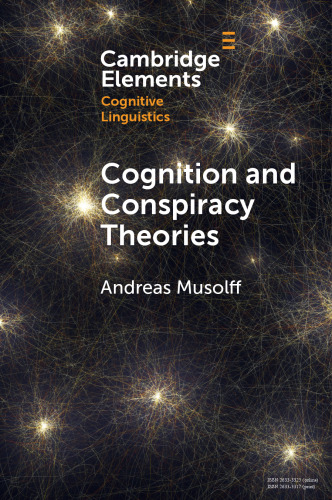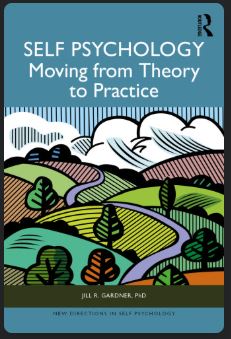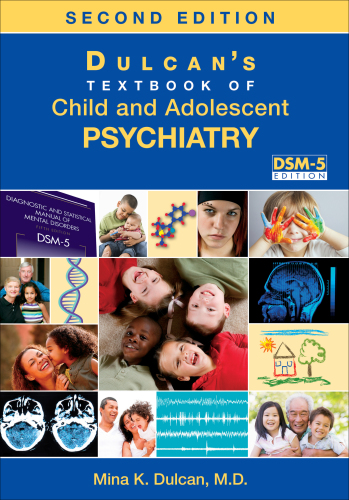Contents
Forewords, xix
Ellen M. Berman, MD
Lloyd I. Sederer, MD
Preface, xxvii
Acknowledgments, xxxi
A Guide for Using the Text, xxxiii
List of Tables, xxxvii
List of Figures, xxxix
Section I Family Therapy in Context
1 The Field of Couples and Family
Therapy: Development and
Definition, 5
Objectives for the Reader, 5
Introduction, 5
Development of the Family Therapy Field, 6
Definition of Couples and Family Therapy, 9
Core Concepts, 10
General Systems Theory, 10
Family Systems Theory and Homeostasis Over
Time, 14
An Integrative Interpersonal Model, 16
Differentiation of Family Therapy From Other
Psychotherapies, 16
Clinical Practice Implications, 19
Suggested Reading, 19
References, 19
2 Family Life in Historical and Sociological
Perspective, 23
Objectives for the Reader, 23
Introduction, 23
Structure and Function of the American
Family, 23
Immigration, 24
Ethnicity, 24
Secular View of Marriage, 25
Structures of Marriage, 26
Divorce, 26
The Functional Single-Parent Family, 27
Stepfamilies, 27
LGBTQ (Lesbian, Gay, Bisexual, Transgender,
Queer) Couples, 28
Parenting in Post-modern Relationships, 29
Family Types, 30
Multiracial Families, 30
African-American Families, 31
Latino Families, 31
Asian Families, 31
Social Class, 32
Aging of the Population, 33
The Changing Family Life Cycle, 33
Clinical Practice Implications, 34
Suggested Reading, 34
References, 34
Section II Functional and
Dysfunctional Families
3 Understanding the Functional Family, 41
Objectives for the Reader, 41
Introduction, 41
The Family as a System, 42
The Couples/Marital and Family Life Cycle, 44
The Individual Life Cycle, 44
The Couples/Marital Life Cycle, 46
Phase of Relationship and Tasks, 46
Marital Coalition, 47
Sex, Intimacy, and Companionship, 49
The Family Life Cycle, 49
Family Tasks, 52
Provision of Basic Needs, 52
Rearing and Socialization of Children, 53
Family Belief Systems, 55
Family Resilience, 55
ix
x Contents
Clinical Practice Implications, 55
Suggested Readings, 56
References, 56
4 Understanding the Functional Family in
a Variety of Family Forms, 59
Objectives for the Reader, 59
Introduction, 59
Impact of an Extended Individual Life Cycle, 59
Marriage, 60
Divorce, 60
Marital Separation, 61
Divorce, 61
Children and Divorce, 62
Binuclear Families, 62
The Functional Single-Parent Family, 63
Mother-Headed Single-Parent Families, 64
Father-Headed Single-Parent Families, 65
Remarriage and Blended Families, 65
Remarried Couple, 66
Stepfamilies (Blended Families), 66
Grandparent-Headed Families, 67
Lesbian, Gay, or Transgendered Families, 67
Parents with a Gender Non-conforming Child, 68
Multiple-Partner Fertility Families, 69
Adoption and Families, 69
Interracial Families, 69
Trends in Parenting, 70
Clinical Practice Implications, 70
Suggested Reading, 70
References, 71
5 Problems and Dysfunction from an
Integrated Family Systems Perspective, 75
Objectives for the Reader, 75
Introduction: The Dysfunctional Family
System, 75
A Systems Approach to Problems and
Dysfunction, 76
Historical Perspectives, 76
Current Perspectives, 77
Structural Problems, 78
The Solution as the Problem, 79
Family Beliefs and Myths, 80
The Larger Social System and Dysfunction, 84
Implications for Treatment—The
Development of Symptoms in a Particular
Person, 85
Life Cycle Problems and Dysfunction, 86
Unresolved Grief, 87
Toxic Secrets, 87
Task Performance in the Dysfunctional
Family, 87
Providing for the Family’s Basic Needs, 88
Maintaining a Functional Marriage: Issues of
Sex, Intimacy, and Commitment, 88
Rearing and Socializing of Children, 88
Clinical Practice Implications, 89
Suggested Reading, 89
References, 89
Section III Family Evaluation
6 The Process of Evaluation, 95
Objectives for the Reader, 95
Introduction, 95
Who to Include in the Family Evaluation, 95
Progression of the Family Evaluation
Interview, 96
Dimensions of Couple and Family
Assessment, 97
Joining with the Couple or Family, 97
Seeing Systemic Patterns, 98
Recognizing Family Developmental Stage,
History, and Culture, 98
Identifying Family Structure, 99
Working with a Systemic Model of Change, 100
Role of Historical Material, 101
Role of Individual and Family Diagnoses, 102
Clinical Practice Implications, 102
References, 103
7 The Content of Evaluation, 107
Objectives for the Reader, 107
Introduction, 107
Dimensions of Family Function, 107
Family Evaluation Outline, 107
Gathering Identifying Data and Establishing
Current Phase of Family Life Cycle, 108
Gathering Explicit Interview Data, 109
Contents xi
What is the Background of the Family
Problem?, 110
What is the History of Past Treatment
Attempts?, 111
What are the Families Goals and Expectations
of the Treatment?, 112
The Family Genogram, 114
Clinical Practice Implications, 114
References, 114
8 Formulating an Understanding of the
Family Problem Areas, 117
Objectives for the Reader, 117
Introduction, 117
Rating Important Dimensions of Family
Functioning, 117
Communication, 117
Problem Solving, 118
Roles and Coalitions, 118
Affective Responsiveness and Involvement, 118
Operative Family Beliefs and Stories, 119
Recent Family Events and Stresses, 119
Family Classification and Diagnosis, 119
Planning the Therapeutic Approach and
Establishing the Treatment Contract, 124
Case Example Illustrating Evaluation and Case
Formulation, 126
Suggested Reading, 132
References, 132
Section IV Family Treatment
9 Major Family Therapy Schools and Their
Treatment Strategies, 137
Objectives for the Reader, 137
Introduction, 137
Insight-Awareness Model, 137
Family of Origin Model, 140
Systemic-Strategic Model, 141
Structural Model, 141
Cognitive–Behavioral Model, 142
Experiential Model, 143
Narrative Model, 143
Psychoeducational Model, 143
Clinical Practice Implications, 144
Recommended Readings, 144
References, 144
10 Goals, 147
Objectives for the Reader, 147
Introduction, 147
Mediating and Final Goals as They Relate to
Schools, 147
The Most Common Mediating Goals, 147
The Most Common Final Goals, 148
Individualizing Goals With the Family, 149
Goals and Their Relation to Process and
Content Issues, 151
Mediating Goals and Their Related Strategies, 151
Goals and Related Strategies Common to All
Family Therapy Schools, 152
Clinical Practice Implications, 153
Reference, 153
11 Family Treatment: Integrated Strategies
and Techniques, 157
Objectives for the Reader, 157
Introduction, 157
General Elements of Psychotherapy and Their
Relationship to Family Therapy, 157
Basic Strategies of Family Intervention, 158
Techniques for Supporting Adaptive
Mechanisms and Strengths: The
Psychoeducational Approach, 158
Techniques for Expanding Emotional
Experience, 160
Techniques for Developing Interpersonal Skills,
161
Techniques for Reorganizing the Family
Structure, 163
Techniques for Increasing Insight and Conflict
Resolution, 167
Techniques for a More Effective Construction of
Family Reality, 169
Treatment Packages, 170
Indications for Differential Use of the Basic
Strategies, 170
Clinical Practice Implications, 171
References, 171
12 The Course of Family Treatment, 175
Objectives for the Reader, 175
Introduction, 175
Early Phase, 175
Identifying Objectives of the Early Phase, 175
xii Contents
Choosing Strategies to Get Started, 175
Distributing the Available Time, 176
Gathering History and Simultaneously
Building a Treatment Alliance with the
Family, 176
Distinguishing Evaluation from Treatment, 178
Middle Phase, 178
Termination Phase, 179
Conducting Brief Family Therapy: Treatment
as It Is Influenced by Time Constraints, 180
Indications for Brief Family or Couples
Intervention, 181
Course of Brief Therapy, 181
Techniques, 182
Setting Limited Goals and a Definite End
Point, 182
Active Focus: Reinforcement of Family
Strengths, Reconceptualization, 183
Active Exploration of Alternatives: Behavioral
and Emotional Rehearsal, 183
Homework and Family Tasks, 184
The Problem-Oriented School of Brief
Therapy, 184
Crisis Intervention, 185
Clinical Practice Implications, 185
Suggested Reading, 185
References, 185
13 Promoting Change in Family Treatment:
Issues of Alliance and Resistance, 189
Objectives for the Reader, 189
Introduction, 189
The Therapeutic Alliance, 189
Models for Dealing with Families That Have
Trouble Forming an Alliance, 191
Medical Model, 191
Coaching Model, 191
Conflict Model, 191
Strategic Systems Model, 192
Problems in Creating Change: Resistance and
Disconnection, 192
Problems in Creating Change: Emanating from
the Family, 193
Problems in Creating Change: Emanating from
the Therapist, 193
Problems in Creating Change: From the
Therapist–Family System, 194
Problems in Creating Change: Stages of
Treatment: At Evaluation and Early in
Treatment, 194
Problems in Creating Change: In Ongoing
Treatment, 196
Problems in Creating Change: At the
Termination Phase of Therapy, 197
Problems in Creating Change: Family Secrets, 197
Techniques to Deal with Resistances or Stalled
Therapy, 198
Assume Nothing, 199
Collaboration, 199
Emphasizing family responsibility, 199
Focus on the present, 199
Clinical Practice Implications, 199
Suggested Reading, 200
References, 200
14 Family Therapy: General Considerations,
203
Objectives for the Reader, 203
Introduction, 203
Family Participants, 203
Extended Family and Significant Others, 205
Caregivers, 205
Including Children and Adolescents in Family
Therapy, 206
Diagnostic Family Evaluation, 206
Treatment, 207
Therapist Combinations, 208
Co-Therapy, 208
Working as a Team, 209
Setting, 210
Time, Scheduling, and Fees, 210
Keeping a Record of Treatment, 211
Family Therapy in Combination with Other
Psychosocial Therapies, 211
Practical Guidelines, 213
Effective Family Intervention, 214
Comparison of Therapy Formats and
Strategies, 214
Clinical Practice Implications, 215
References, 215
Contents xiii
Section V Couples Therapy
15 Dysfunctional Couples and Couples
Therapy, 221
Objectives for the Reader, 221
Introduction, 221
Marriage in Its Historical Context, 221
Couples Difficulties, Problems, and
Dysfunction, 222
From a Dynamic Point of View, 223
From a Behavioral Point of View, 223
From a Systems Point of View, 224
From a Psychiatric Illness Point of View, 224
Couples’ Development Dysfunction, 224
Couples Therapy, 225
The Issue of Commitment—The Problem of
Affairs, 225
Evaluation of Partners, 226
Goals, 227
Strategies and Techniques of Intervention, 227
A Model for Intervention Based on Patterns of
Interaction, 227
Individual Models, 228
Strategies and Techniques, 229
Clinical Practice Implications, 231
References, 231
16 Sex, Couples, and Sex Therapy, 235
Objectives for the Reader, 235
Introduction, 235
Diagnosis—Systems Issues, 236
Some Parameters of Sexual Function, 236
Assessment of Sexual Disorder, 237
Treatment, 240
Lack of Desire, 240
Erectile Disorder, 240
Premature (Early) Ejaculation, 240
Painful Intercourse/Female Orgasmic
Disorder, 240
Other Issues Related to Sexuality and
Couples, 242
The Spectrum of Sexuality, 242
Sexual Functioning After Rape or Sexual
Abuse, 243
Sexual Problems After Medical Illness, 243
Sexual Problems in the Elderly, 244
Clinical Practice Implications, 244
Suggested Reading, 244
References, 244
17 Couples and Families Breaking Apart:
Separation and Divorce, 249
Objectives for the Reader, 249
Introduction, 249
Separation, 249
Separation Leading to Divorce, 250
Communicating the Issue of Divorce to
Children, 251
Immediate Issues, 252
Therapy for Families Facing Divorce, 253
Divorce and Post-divorce Treatment, 254
Single-Parent and Binuclear Families, 255
Blended Families (Stepfamilies), 255
Goals, 256
Evaluation and Treatment, 256
Cohabiting Couples, 259
Serial Relationships, 260
Clinical Practice Implications, 260
Suggested Reading, 261
References, 261
Section VI Family Treatment When
One Member Has a Psychiatric
Disorder or Other Special Problem
18 Family Treatment in the Context of
Individual Psychiatric Disorders, 267
Objectives for the Reader, 267
Introduction, 267
The Family Model and Individual
Diagnosis, 267
Schizophrenia, 268
Rationale, 268
Treatment Considerations, 269
Patients with Schizophrenia Living with or
Supported by Families of Origin, 272
Mood Disorders: Bipolar Disorder, 274
Rationale, 274
Treatment Considerations, 276
Mood Disorders: Persistent Depressive
Disorder and Major Depressive Disorder, 277
Rationale, 277
Treatment Considerations, 279
xiv Contents
Borderline Personality Disorder (BPD), 281
Rationale, 281
Treatment Considerations, 282
Anxiety Disorders, 283
Rationale, 283
Panic Disorder and Agoraphobia, 284
Treatment, 284
Obsessive-Compulsive Disorder, 285
Rationale, 285
Treatment, 285
Post-traumatic Stress Disorder, 285
Rationale, 285
Treatment, 286
Dementia, Amnesia, and Other Cognitive
Disorders, 286
Rationale, 286
Treatment Considerations, 287
Eating Disorders, 288
Rationale, 288
Treatment Considerations, 288
Substance-Related Disorders, 289
Rationale, 289
Assessment and Treatment Guidelines, 290
Children of Alcoholic Parents, 291
Psychiatric Disorders of Childhood, 291
Intellectual Disability, 291
Treatment, 291
Autism Spectrum Disorder, 292
Attention-Deficit/Hyperactivity Disorder, 292
Oppositional Defiant Disorder and Conduct
Disorder, 294
Anxiety Disorders, 294
Mood Disorders, 294
Childhood Obesity, 295
Clinical Practice Implications, 295
Suggested Reading, 295
References, 295
19 Family Treatment in the Context of
Other Special Problems—Violence to
Self and Others, 301
Objectives for the Reader, 301
Introduction, 301
The Family Model and Violence, 302
Description of the Problem, 302
How Violent Acts Occur: The Cycle of Violence, 303
Assessment of Individual and Family Systems
Issues, 304
Physical and Psychological Consequences of
Violence, 305
Treatment, 306
Clinical Issues for Therapists, 309
Intrafamilial Child Sexual Abuse, 310
Individual Issues, 310
Family Issues, 310
Larger System Issues, 311
Assessment, 311
Treatment, 312
Outcomes, 312
The Family Model and Child Abuse, 312
The Suicidal Patient and the Family, 314
Acute Management, 314
Evaluating the Family, 315
Involving the Family, 315
Treating the Family, 316
Discharging the Hospitalized Patient, 316
Clinical Practice Implications, 316
Suggested Reading, 316
References, 317
20 The Family and Treatment of Acute and
Chronic Psychiatric Illness, 321
Objectives for the Reader, 321
Introduction, 321
Background, 322
Acute Treatment, 322
The Function of the Acute Team for the
Family, 322
Family Responses to Mental Illness of a Family
Member, 323
The Family Burden in Psychotic Illness, 323
Rationale for Acute Treatment of Families, 324
Process of Family Treatment in Acute Care, 325
Common Goals of Acute Family Intervention, 326
Particular Decisions in Acute Care and Family
Intervention, 328
Family Techniques, 329
A Working Model of Acute Family
Intervention, 330
Guidelines for Recommending Family
Intervention in an Acute Care Setting, 331
Empirical Studies, 332
Contents xv
Families of the Chronically Ill, 333
Community-Based Support Groups, 335
Controversies in the Treatment of Acute and
Chronic Psychiatric Illness, 336
Clinical Practice Implications, 337
References, 337
21 Working with Families in the
Medical Setting, 343
Objectives for the Reader, 343
Introduction, 343
How Family Functioning Impacts Illness, 343
Gender Matters, 344
Family Health Beliefs, 344
Family Adherence, 344
How Illness Impacts Family Functioning, 345
Family Coping and Adaptation to Illness, 345
Learning to Cope and Adapt, 346
Providing a Therapeutic Space, 347
Caregiving, 347
A Family Systems Interview for Families with
Medical Illness, 347
1. Problem Solving, 348
2. Communication, 348
3. Roles, 348
4. Affective responsiveness, 349
5. Affective involvement, 349
6. Behavior control, 350
Family Interventions, 350
Family Support, 350
Family Psychoeducation, 350
Family Systemic Interventions, 351
Multifamily Groups, 352
Clinical Practice Implications, 352
Suggested Reading, 352
References, 352
Section VII Results of and
Guidelines for Recommending
Family Therapy
22 Indications for and the Sequence of
Family Therapy Evaluation and
Treatment, 359
Objectives for the Reader, 359
Introduction, 359
Sequence of Evaluation and Treatment
Planning, 359
Step 1: Is Family Evaluation Indicated?, 360
Step 2: Is Family Treatment Indicated?, 361
Family Therapy Versus Individual Therapy, 361
Managed Care, 364
Individual, Couples, or Sex Therapy for Sexual
Problems, 364
Family Crisis Therapy Versus Hospitalization, 365
Step 3: What Shall Be the Duration and
Intensity of Family Therapy?, 365
Family Crisis Therapy, 366
Brief Family Therapy, 366
Long-Term Family Therapy, 366
Step 4: What Model of Family Intervention Is
Indicated?, 367
Clinical Practice Implications, 367
References, 367
23 Controversies, Relative
Contraindications, and the Use and
Misuse of Couples and Family Therapy, 371
Objectives for the Reader, 371
Introduction, 371
Couples Therapy, 371
Couples Conflict and Dissatisfaction, 371
Sexual Issues, 373
Families in the Process of Divorce, 373
Unmarried Couples, 373
The Child as the Identified Patient, 373
The Adolescent as the Identified Patient, 374
Family of Origin Issues, 375
Situations in Which Family Therapy Is
Difficult and Perhaps Contraindicated, 375
When Psychopathology in One Family Member
Makes Family Therapy Ineffective, 375
When the Family or Therapist Thinks the
Risks of Therapy Outweigh the Advantages, 376
When the Family as a Whole Denies Having
Family Problems, 377
When Cultural or Religious Prejudices Are
Present, 377
Skills and Attributes of the Therapist as They
Affect Family Work, 377
Clinical Practice Implications, 377
References, 378
xvi Contents
24 Results: The Outcomes of Couples and
Family Therapy, 381
Objectives for the Reader, 381
Introduction, 381
Overview of Psychotherapy Outcome
Research, 381
1. Specificity, 381
2. The Difference Between Efficacy and
Effectiveness, 382
3. The Difference Between Qualitative and
Quantitative, or Exploratory and
Confirmatory, Research, 382
4. The Difference Between Process and
Outcome Research, 383
What the Studies Show?, 383
Couples Treatments for Adult Disorders, 384
Insight-Oriented Marital Therapy for Marital
Distress, 384
Integrative Behavioral Couple Therapy for
Marital Distress, 384
Emotionally Focused Couples Therapy for
Marital Distress, 385
Behavioral Marital Therapy for Depression, 385
Behavioral Couples Therapy for Alcoholism, 385
Couples Therapy for Posttraumatic Stress
Disorder, 386
Family Treatments for Adult Disorders, 386
Schizophrenia and Major Mental Illness, 386
Focused Family Therapy for Bipolar Disorder, 386
Family Treatments for Child and Adolescent
Disorders, 387
Brief Strategic Family Therapy for Children
and Adolescents with Externalizing Disorders, 387
Functional Family Therapy for Delinquent
Adolescents, 388
Multidimensional Family Therapy for
Adolescent Substance Abuse, 388
Multisystemic Therapy for Youth at Risk, 388
Functional Family Therapy for Adolescents
with Bipolar Disorder, 388
Family-Based Treatment for Anorexia
Nervosa, 389
Family Interventions for Medical Illnesses, 389
The Effectiveness of Combining Medication
and Family Therapy, 389
Limitations of Family Therapy, 390
Negative Effects of Family Therapy, 391
Inability to Engage and Premature
Termination of Family Therapy, 394
Clinical Implications of Data from Couples
and Family Therapy Outcome Studies, 395
Clinical Practice Implications, 396
References, 396
Section VIII Ethical, Professional,
and Training Issues
25 Ethical and Professional Issues
in Couples and Family Therapy, 405
Objectives for the Reader, 405
Introduction, 405
Ethical Issues Inherent in Family Therapy, 405
Conflicting Interests of Family Members, 406
Understanding HIPPA, 406
Secrets and Confidentiality, 407
Issues Involving Gender, Gender Roles, and
Sexuality, 409
Ethics in a Managed Care World, 409
Informed Consent, 410
Financial Issues, 410
Professional Issues, 411
The Problem of Boundaries and Dual
Relationships, 411
Competencies, 411
Training Issues, 414
Clinical Experiences, 416
Training Programs in Family Psychiatry, 417
A Multidisciplinary Field, 417
Family Therapy Fellowships, 418
Training and Licensure, 418
Clinical Practice Implications, 418
Suggested Reading, 419
References, 419
Index, 421
ادامه ...
بستن ...










